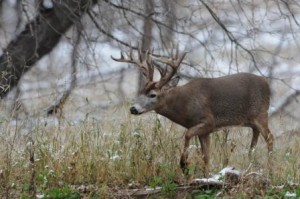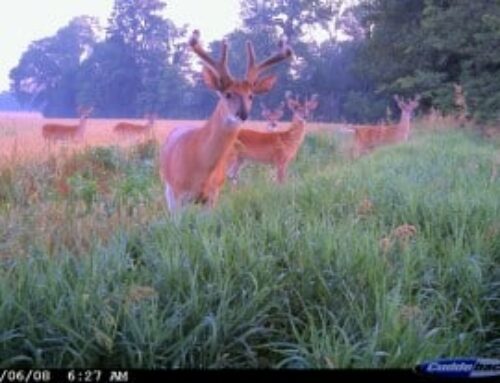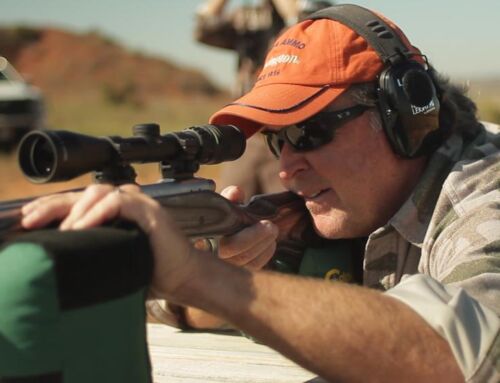 Scientists tracked adult bucks fitted with GPS collars on a hunted property on the Maryland coast. Data collected from the GPS collars allowed the researchers to home in on the home ranges of mature bucks, and the “core areas” within those home ranges. The property was a mix of agricultural fields and woods, typical of whitetail habitat across the United States.
Scientists tracked adult bucks fitted with GPS collars on a hunted property on the Maryland coast. Data collected from the GPS collars allowed the researchers to home in on the home ranges of mature bucks, and the “core areas” within those home ranges. The property was a mix of agricultural fields and woods, typical of whitetail habitat across the United States.
“We saw core areas show up in places that (people) basically don’t hunt,” said Dr. Mark Conner, who headed up the study.
Mark described 2 sites in particular that served as the core areas for multiple bucks. “One is a sanctuary because it is impenetrable to humans,” he said. “Very dense greenbrier and other thorny vegetation. The only way you can get into it is to find a deer trail and get on your hands and knees and go in there.”
The other core area is a designated waterfowl sanctuary that surrounds a pond. Human activity is restricted to avoid disturbing the geese and ducks that use the pond. The restricted area is about 25 acres and includes woodlands, fields and pockets of native grasses.
“It’s almost the opposite of the (first) sanctuary. It’s very open,” Mark said. “But like the other sanctuary, there is no human disturbance. These 2 areas were core areas for multiple bucks, and by our definition of core area, the bucks spent 50 percent of their time in those areas.”
Lesson is simple: Anywhere in America, mature, big-racked deer spend most of their time where humans, including us hunters, can’t or won’t go.





